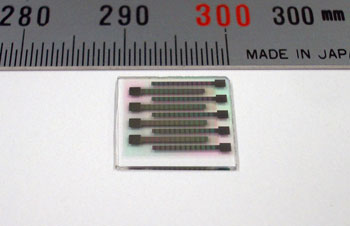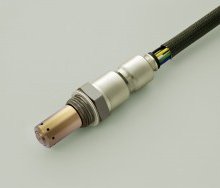 02-11-2008, 11:48 PM
02-11-2008, 11:48 PM
|
#4 (permalink)
|
|
Pokémoderator
Join Date: Dec 2007
Location: Southern California
Posts: 5,864
Thanks: 439
Thanked 532 Times in 358 Posts
|
Hello -
I'm going to keep using this thread as a dumping ground for info I find (aka notus repositorius) :
Integrated Material and Information Technologies for Novel Emission Control Systems
http://www.imitec.org/

Quote:
The project started in April 2001 and finished in June 2005.
The scope of the project was to develop an integrated sensor platform for next-generation emission control systems such as particulate (soot) filters and nitrogen oxide converters through systems integration of micro/nano materials technologies, virtual sensor simulation algorithms and instrumentation of emission control devices. This is in direct response not only to future market potential of these technologies but also to explicit statements of the EC to push sensor development for such applications by 2008. After incorporating software modules with the sensor elements the integrated device was tested under realistic conditions for developing modalities and strategies for feedback control of the system. Finally, LCA/technoeconomic assessment for the developed technologies was carried out
|
Development of a High-Sensitivity Rapid-Response NOX Sensor - July 4, 2007
Development of a High-Sensitivity Rapid-Response NOx Sensor

Quote:
Conventional NOX sensors do not have sufficient robustness or heat resistance in the harsh environment of engine exhaust gases. To solve this problem, a multi-chamber sensor that uses a solid oxide electrolyte (oxygen-ion conductor) has been developed. This, however, inherently does not give a high-speed response, because it has a rather complicated structure and it measures NOX concentrations by combining multistep electrochemical reactions. This poses a problem in relation to the purification of exhaust gases and reduction of fuel consumption.
The newly developed sensor has extremely high selectivity toward NOX molecules as a result of precise control of the nanostructure of the sensing electrode that detects NOX. This structural improvement to the electrochemical cell gives the speed of response for the direct detection of NOX molecules that is five times as fast as that of a conventional sensor and the detection sensitivity that is doubled.
...
Strenuous efforts are being made to develop lean-burn technologies for gasoline-fueled vehicles to comply with societal demands for reducing CO2 emissions and better fuel consumption. However, although lean-burn engines produce less CO2 emissions, they produce more NOX emissions than conventional engines. Existing three-way catalysts cannot be used to eliminate NOX emissions under lean combustion because of the high concentration of oxygen in the exhaust gases. Instead of the three-way catalyst, a practical lean-burn engine uses a NOX storage–reduction catalyst system.A NOX trap material in this catalyst absorbs NOX during lean-burn condition. When the catalyst becomes saturated with NOX, a rich spike (excessive fuel supply) is generated in the engine, and this excessive amounts of fuel reduces and purifies the absorbed NOX.
|
ZFAS®-N2(NOx Sensor (under development))
NGK SPARK PLUG CO., LTD. | ZFAS®-N2(NOx Sensor (under development))

Quote:
|
This sensor can simultaneously measure the NOx concentration and the oxygen concentration in the exhaust gas. It contributes to energy conservation and clean air through NOx control in gasoline DI engines and diesel engines.
|
CarloSW2
Last edited by cfg83; 06-28-2009 at 04:35 PM..
|
|
|

|